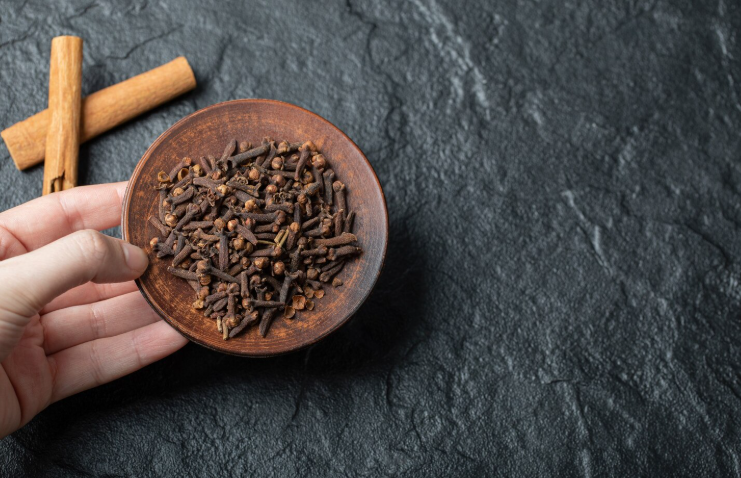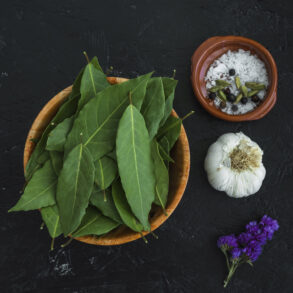Across Indian kitchens and Ayurvedic pharmacies alike, mulethi—better known as licorice root—has been treasured for centuries. Its sweet flavor makes it a favorite herbal remedy for sore throats, but beneath that sweetness hides a powerful skin ally. When used correctly, mulethi helps lighten dark spots, reduce uneven tone, and revive dull skin—all without chemical bleaching agents.
Today, modern cosmetology and Ayurveda meet in a shared conclusion: learning how to use mulethi (licorice root) for hyperpigmentation at home can transform natural skincare.
1. Understanding Hyperpigmentation and Its Causes
Hyperpigmentation is the skin’s defense response to imbalance or injury. Melanin—the pigment that gives skin its color—rises to the surface when triggered by:
- Excess sun exposure
- Hormonal changes (pregnancy, contraceptives)
- Post-inflammatory marks from acne or rashes
- Pollution and oxidative stress
Conventional creams often rely on synthetic bleaching agents like hydroquinone or kojic acid, which can irritate sensitive skin. Ayurveda, however, views pigmentation as an expression of Pitta dosha imbalance—too much internal heat manifesting as uneven tone. The Ayurvedic solution focuses on cooling, nourishing, and detoxifying the skin gently.
That’s why how to use mulethi (licorice root) for hyperpigmentation at home has become such a valuable question for people seeking safe, holistic alternatives.
2. Ayurvedic View: Why Mulethi Works
In Ayurvedic pharmacology, mulethi is called Yashtimadhu, derived from Yashti (stem) and Madhu (sweet). It is classified as a Varnya (complexion-enhancing) and Rasayana (rejuvenating) herb.
Energetic Properties
| Quality | Sanskrit Term | Action |
|---|---|---|
| Taste | Madhura (sweet) | Nourishes tissues, balances Pitta |
| Energy | Sheeta (cooling) | Reduces heat and inflammation |
| Post-digestive effect | Madhura | Promotes long-term rejuvenation |
| Effect on Doshas | ↓ Pitta ↓ Vata | Calms irritation, dryness, and redness |
Because mulethi cools internal heat and purifies the blood, it naturally corrects pigmentation rooted in Pitta aggravation. Thus, when exploring how to use mulethi (licorice root) for hyperpigmentation at home, one is essentially restoring the body’s balance.
3. The Science Behind Mulethi’s Brightening Effect
Modern dermatological research validates what Ayurveda taught millennia ago. Mulethi contains glabridin, a flavonoid that inhibits tyrosinase, the key enzyme responsible for melanin synthesis.
Key Bioactive Compounds in Licorice Root
| Compound | Function |
|---|---|
| Glabridin | Inhibits tyrosinase, reduces dark spots |
| Liquiritin | Disperses existing melanin |
| Licochalcone A | Anti-inflammatory, protects from UV damage |
| Glycyrrhizin | Hydrating, soothes irritation |
Together, these molecules perform a multi-layered action:
- Prevention: Stops new pigmentation from forming.
- Correction: Breaks down existing melanin clusters.
- Protection: Shields skin from UV-induced darkening.
That’s why how to use mulethi (licorice root) for hyperpigmentation at home has become a scientific as well as traditional approach to brightening skin safely.
4. Forms of Mulethi for Home Use
There are several ways to bring licorice root into your daily routine.
1. Mulethi Powder
Finely ground from dried roots, it’s ideal for masks, scrubs, and herbal blends. Mix with aloe, rose water, or yogurt.
2. Mulethi Decoction
Simmer pieces of root in water until reduced by half. Use the cooled liquid as a toner or base for face packs.
3. Mulethi Oil or Extract
Commercially prepared extracts in jojoba or sesame oil deliver concentrated actives—perfect for spot treatment.
4. Mulethi-Infused Water
Soak crushed roots overnight in water, then use that infusion to wash your face in the morning.
Whichever form you choose, how to use mulethi (licorice root) for hyperpigmentation at home always begins with purity—unadulterated herb, free from added fragrance or alcohol.
5. Step-by-Step: How to Use Mulethi (Licorice Root) for Hyperpigmentation at Home
Here’s a full Ayurvedic routine you can follow:
Step 1 – Cleanse Gently
Use a mild herbal cleanser—chickpea flour (besan) or oatmeal mixed with rose water—to remove dust and makeup. This preps pores for the herbal actives.
Step 2 – Apply a Fresh Mulethi Mask
Recipe:
- 1 teaspoon mulethi powder
- 1 tablespoon aloe vera gel
- Few drops of lemon juice (optional)
Mix into a smooth paste. Apply evenly over the face and neck, avoiding eyes. Leave for 15 minutes, then rinse with cool water.
Step 3 – Tone with Mulethi Decoction
After cleansing, dab mulethi-boiled water using cotton. This balances pH and enhances brightness over time.
Step 4 – Moisturize Naturally
Follow with a light cream containing sandalwood or saffron oil to lock in hydration.
Repeat this 2–3 times a week to see gradual fading of pigmentation and improvement in tone.
6. Popular Ayurvedic Combinations with Mulethi
a. Mulethi + Manjistha
Manjistha purifies the blood while mulethi cools and brightens. Together they fade stubborn pigmentation caused by internal toxins.
b. Mulethi + Turmeric
Turmeric’s curcumin works synergistically with glabridin to reduce inflammation and prevent new dark spots.
c. Mulethi + Aloe Vera
Perfect for sensitive skin; adds moisture while brightening.
d. Mulethi + Saffron
Enhances radiance and corrects uneven tone—the classic “bridal glow” blend in Ayurvedic rituals.
Each pair represents a balanced formula within the philosophy of how to use mulethi (licorice root) for hyperpigmentation at home—where synergy matters more than single-ingredient potency.
7. DIY Face Packs for Different Skin Types
| Skin Type | Ingredients | Benefits |
|---|---|---|
| Dry Skin | Mulethi + Milk + Honey | Deep nourishment and mild lightening |
| Oily Skin | Mulethi + Multani Mitti + Rose Water | Absorbs sebum, refines pores |
| Combination Skin | Mulethi + Aloe + Cucumber Juice | Balances hydration and brightness |
| Sensitive Skin | Mulethi + Sandalwood + Chamomile Tea | Reduces redness, calms inflammation |
These variations illustrate the versatility of how to use mulethi (licorice root) for hyperpigmentation at home, letting everyone customize the herb to their unique constitution.
8. Inside-Out Healing: Diet and Lifestyle Tips
Topical care gives faster results when combined with internal balance.
Dietary Recommendations
- Eat cooling, Pitta-balancing foods: cucumbers, melons, leafy greens.
- Avoid spicy, oily, and fermented dishes that aggravate heat.
- Drink herbal teas with mulethi, rose, or coriander.
- Include ghee and fresh fruits for hydration and Ojas.
Lifestyle Habits
- Sleep before 11 p.m. to align with natural repair cycles.
- Avoid excessive sun exposure; use scarves or herbal sunscreens.
- Manage stress through yoga and meditation—mental heat affects pigmentation too.
The more harmony you cultivate within, the more effective how to use mulethi (licorice root) for hyperpigmentation at home becomes.
9. Modern Scientific Studies on Licorice for Skin
- A 2014 study in Journal of Cosmetic Dermatology showed that 1% licorice extract cream reduced UV-induced pigmentation in eight weeks.
- Researchers at Osaka University found glabridin suppresses melanin production without cytotoxicity—unlike synthetic agents.
- Clinical trials comparing licorice to hydroquinone report comparable brightening with fewer side effects.
These studies underpin the credibility of how to use mulethi (licorice root) for hyperpigmentation at home as a science-supported routine rather than folklore.
10. Safety and Precautions
Even natural ingredients need care.
- Always patch-test new blends behind the ear.
- Avoid applying raw powder on open wounds.
- Don’t combine with strong acids like glycolic or retinol on the same night.
- Pregnant or nursing women should consult an expert before internal consumption.
Used wisely, mulethi remains one of the safest herbs for daily skincare—a testament to the gentle power of Ayurveda.
11. Night-Care Rituals Using Mulethi
Nighttime is when your skin repairs micro-damage from the day, and licorice root’s cooling, regenerative nature makes it ideal for evening use. Understanding how to use mulethi (licorice root) for hyperpigmentation at home effectively at night amplifies its results.
Simple Bedtime Routine
- Cleanse: Use a gentle herbal face wash containing aloe or rose.
- Tone: Wipe the face with chilled mulethi decoction to close pores.
- Massage: Blend 2 drops of mulethi oil with 3 drops of almond oil; massage for two minutes in upward circles.
- Seal: Finish with a thin layer of aloe or saffron gel to lock moisture.
- Sleep early: The skin’s repair enzymes peak between 10 p.m. and 2 a.m.—the perfect window for herbal absorption.
Following this routine for 21 days shows why how to use mulethi (licorice root) for hyperpigmentation at home fits seamlessly into a natural night-care ritual.
12. Advanced Herbal Blends with Mulethi
a. Brightening Serum
Ingredients
- 1 teaspoon mulethi extract
- 2 teaspoons rosehip oil
- 3 drops vitamin E
Shake well in a glass bottle. Apply nightly on dark spots.
Result: Glabridin lightens pigmentation while rosehip’s vitamin C supports collagen.
b. Detox Clay Mask
Ingredients
- 1 tbsp multani mitti
- ½ tsp mulethi powder
- 1 tsp neem paste
- Rosewater as needed
Apply for 10 minutes. This clarifies congested pores and evens tone—an excellent example of how to use mulethi (licorice root) for hyperpigmentation at home for oily skin.
c. Radiance Cream
Melt 1 tbsp shea butter, add ½ tsp mulethi extract and a pinch of turmeric. Cool until creamy. Use nightly for deep hydration and visible glow.
13. Internal Detox: Mulethi Drinks and Supplements
Ayurveda teaches that external glow reflects internal purity. Consuming licorice in moderation enhances the benefits of topical care.
Cooling Mulethi Tea
- Boil ½ teaspoon dried mulethi in two cups of water for five minutes.
- Add a few mint leaves and sip warm.
This tea calms Pitta heat—the underlying cause of pigmentation—and supports the liver, further validating how to use mulethi (licorice root) for hyperpigmentation at home as a whole-body approach.
(Always consult a practitioner before internal use if you have hypertension.)
14. Combining Mulethi with Other Ayurvedic Therapies
Ayurveda often layers treatments for deeper results.
- Abhyanga (oil massage): Improves circulation so nutrients from mulethi masks penetrate better.
- Steam therapy: A brief herbal steam with tulsi or vetiver opens pores before applying the paste.
- Nasya (nasal oiling): Keeps internal heat balanced, indirectly supporting clear skin.
These supportive rituals enhance how to use mulethi (licorice root) for hyperpigmentation at home into a mini spa experience.
15. Seasonal Adjustments
Skin reacts differently through the year; adapting your routine ensures consistent brightness.
| Season | Modification in Using Mulethi | Reason |
|---|---|---|
| Summer | Mix mulethi with aloe or cucumber | To cool excess Pitta |
| Monsoon | Add neem or tulsi | To prevent humidity-related acne |
| Winter | Blend with milk or almond oil | To combat dryness |
| Autumn | Pair with saffron | To heal post-summer pigmentation |
Seasonal tuning is an often-overlooked part of how to use mulethi (licorice root) for hyperpigmentation at home effectively.
16. Modern Research Highlights
Contemporary laboratories continue exploring licorice’s dermatological promise:
- Tyrosinase Inhibition: Studies confirm glabridin blocks the enzyme up to 50 %, preventing new melanin patches.
- UV Protection: Licochalcone A protects keratinocytes from UVB-induced inflammation.
- Synergy with Vitamin C: Combined use accelerates lightening without irritation.
- Stability in Creams: Encapsulated licorice extract maintains potency for six months in topical formulations.
Such data anchor how to use mulethi (licorice root) for hyperpigmentation at home firmly in modern skincare science.
17. Ethical & Environmental Benefits
Choosing herbs like mulethi supports sustainable beauty:
- Grown organically in arid regions with minimal water.
- Naturally biodegradable; no micro-plastic residues.
- Supports rural farmers in India and the Middle East.
- Encourages chemical-free living for both user and planet.
Thus, how to use mulethi (licorice root) for hyperpigmentation at home is eco-friendly self-care with global impact.
18. Common Mistakes to Avoid
- Over-application: Using thick pastes daily may over-dry skin; 2–3 times weekly is enough.
- Combining with strong acids: Can cause irritation—alternate nights only.
- Skipping sunscreen: Even herbal routines need daily SPF to prevent recurrence.
- Impatience: Herbal lightening takes consistent use over several weeks.
Avoiding these pitfalls ensures your practice of how to use mulethi (licorice root) for hyperpigmentation at home remains gentle and effective.
19. Real-Life Experiences
- Priya, 29: “After a month of mulethi-aloe packs, my acne marks faded without dryness.”
- Rahul, 33: “I mixed mulethi powder with yogurt—clearer tone in four weeks.”
- Nisha, 40: “Switching from chemical serums to mulethi cream made my skin calm and even.”
Such testimonials show that understanding how to use mulethi (licorice root) for hyperpigmentation at home delivers authentic, gradual brightness.
20. FAQs About Mulethi for Hyperpigmentation
1. Can I use mulethi daily?
Gentle forms like toner or face wash can be daily; richer masks should be used 2–3 times weekly.
2. Does mulethi lighten the entire face?
It balances tone rather than bleaching, leading to natural uniform brightness.
3. Is mulethi safe during pregnancy?
Topical use is fine; internal intake should be discussed with a practitioner.
4. Can mulethi help under-eye darkness?
Yes—when blended with rose water and applied thinly, it soothes and brightens delicate areas.
5. How long to see visible results?
Most users notice clarity within three to four weeks of consistent care.
6. Can mulethi replace commercial serums?
Yes, if you maintain a disciplined routine and protect skin from sun exposure.
Each answer reinforces practical knowledge on how to use mulethi (licorice root) for hyperpigmentation at home safely.
21. Integrating Mulethi into Modern Skincare
Even modern brands now design hybrid products:
- Foaming Cleansers with licorice extract for daily brightness.
- Niacinamide + Mulethi Serums for spot reduction.
- Sunscreens fortified with licochalcone for UV-defense.
Combining tradition and technology ensures how to use mulethi (licorice root) for hyperpigmentation at home stays relevant in 21-century skincare.
22. Key Takeaways
- Licorice root contains natural brighteners glabridin and liquiritin.
- Works by reducing melanin formation and calming inflammation.
- DIY masks, toners, and serums make it accessible at home.
- Consistency, sun protection, and balanced diet maximize results.
- Safe, sustainable, and holistic—true to Ayurvedic principles.
In short, mastering how to use mulethi (licorice root) for hyperpigmentation at home means understanding skin as a reflection of internal harmony.
23. Conclusion: The Sweet Root of Even-Toned Skin
From ancient Ayurvedic scrolls to clinical laboratories, licorice root has earned its place as nature’s gentle brightener. Its sweetness extends beyond taste—it soothes, cools, and restores confidence.
When you embrace how to use mulethi (licorice root) for hyperpigmentation at home, you’re not just fading dark spots; you’re reviving balance, patience, and respect for natural healing.
Within weeks, skin begins to mirror that inner calm: smooth, luminous, and evenly toned—the kind of glow that no synthetic bleach can mimic.
Let this golden-brown root remind you that nature’s solutions may take time, but they last, nourish, and protect the beauty you already possess.










